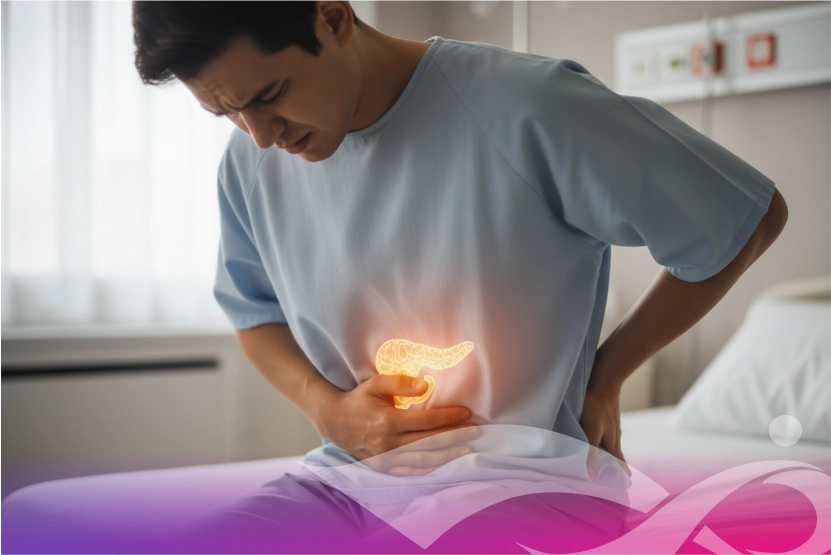A lot of people think of finding a lump when they hear the word "breast cancer." A lump may be a sign of breast cancer, but the disease is much more complicated than that. There are many different types of cancer, not just one. Understanding these breast cancer types and differences is fundamental to receiving personalized and effective care. At the International Oncology Cancer Institute (IOCI), we put a lot of importance on making sure that each patient's diagnosis is correct so that we can create a treatment plan that is right for them.
Most of the time, breast cancer is classified by where it started and whether it is invasive or not:
Ductal Carcinoma In Situ (DCIS): This is a non-invasive breast cancer that is also called "Stage 0." It is made up of cancer cells that are only in the milk ducts and have not spread to the surrounding breast tissue. DCIS is not deadly right away, but it can turn into invasive cancer if it isn't treated.
Invasive ductal carcinoma (IDC) is the most common type of invasive breast cancer, making up about 70–80% of all cases. It starts in the milk ducts but has spread to the breast tissue around them after breaking through the duct walls. After that, it could move on to lymph nodes and other parts of the body.
Invasive lobular carcinoma (ILC) is the second most common type of invasive breast cancer. It starts in the lobules that make milk and then spreads. ILC can also be harder to see on mammograms because it grows more widely instead of forming a noticeable lump. It also has a slightly higher chance of affecting both breasts than IDC.
Breast cancers are also grouped by their molecular subtypes, which are based on whether or not the cancer cells have certain receptors. These differences at the molecular level are important for guiding modern treatment:
Types of Breast Cancer & Why Molecular Subtyping Matter
Hormone receptor-positive (HR+) breast cancer is the most common type, and it makes up about two-thirds of all breast cancers. These cancers grow because they have receptors for the hormones progesterone (PR+) and/or estrogen (ER+). They are very responsive to hormone therapy and often grow more slowly.
- HER2-Positive: About 15–25% of breast cancers are HER2-positive, which means that their cells make too much of the protein HER2 (Human Epidermal Growth Factor Receptor 2), which speeds up cell division. These cancers tend to be more aggressive, but they respond well to targeted treatments that are made just to block HER2.
- Triple-negative breast cancer (TNBC): This aggressive subtype makes up 10 to 15 percent of all cases. TNBC cells don't have progesterone and estrogen receptors or a lot of HER2 protein. TNBC usually doesn't respond to hormone therapy or HER2-targeted drugs because they don't have these common targets. Chemotherapy, immunotherapy, and newer targeted drugs made for TNBC are common treatments.
Targeted Therapy & Chemotherapy: Key Weapons Against Breast Cancer
Understanding what targeted therapy is for breast cancer is essential, especially with these molecular subtypes. Targeted therapies are drugs that are made to break up certain molecules that help cancer grow, spread, and get worse while hurting healthy cells as little as possible. HER2-positive breast cancers are treated with HER2-targeted drugs like trastuzumab or pertuzumab, for example. Endocrine (hormone) therapy is also good for HR+ cancers.
How chemotherapy kills cancer cells is another cornerstone of breast cancer treatment. Chemotherapy drugs kill the genes inside cancer cells, which stops them from growing and dividing. It is often used for more aggressive types of cancer, like TNBC, or when the cancer has spread or is more likely to come back.
Because there are so many different types of breast cancer, a "one-size-fits-all" approach to treatment is no longer useful. At IOCI, our team of radiologists, pathologists, and oncologists looks closely at the unique characteristics of each tumour. Because we know exactly how different types and stages of breast cancer work, we can make treatment plans that are very specific to each patient and give them the best results and the most efficient ways to do things.
Consult us at any of our locations—across IOCI Noida, Greater Noida, Mumbai, Indore, Aurangabad, Agartala, Saharanpur, Kanpur and Jodhpur.












